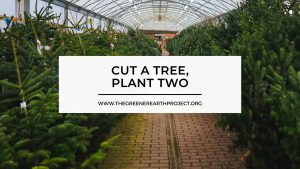Everyone knows that bees are vital for our survival; they pollinate food crops and prop up the ecosystem by pollinating wild plants, which supports other animals such as birds and mammals. However, bees are in decline in the UK due to climate change, habitat loss, and pollution.
What is hurting our bees?
Honeybees are threatened by loss of habitat and food. One reason behind this is the intensification of farming, which has lead to losing of hedgerows and crop rotations.1 Furthermore, a varied and plentiful diet is important in honeybee health.2 Since the World War II, 97% of our wildflower meadows have disappeared, as well as woodland and upland heaths.2 Large cities also cause problems, as any spare land is given to housing developers, and gardens are paved.2
The use of synthetic fertilisers and pesticides, such as neonics, are also to blame.1 An increasing population means that the yield of food from farmers also needs to increase, so it is easy to understand why farmers turn to intensive farming methods. However, fertilisers and pesticides are detrimental to the environment and many species relying on arable farmland as a food source, as well as any surrounding wild areas.
Pesticides are designed to kill insects that will devour an entire crop, but they cannot determine if an insect is beneficial; therefore, all insects be negatively impacted by pesticide use. They can also kill other wildlife, as noted by etymologist Dave Goulson, and there is enough neonic on a single seed to kill a songbird.1 Fortunately, the European Union (EU) banned using neonics outdoors in 2018. However, there are still damaging pesticides being used.
What can we do to help?
While we have been lead to believe that bees only like to take pollen and nectar from wildflowers, they are actually tree feeders and dwellers. When planting for bees, it is worth looking for a tree, if you have the space. A single lime tree, for example, produces more foliage than half a football pitch of wildflowers,3 and therefore more food for bees.
The best trees to including in your wildlife garden, if space allows, include:
- Cherry, almond, apricot, peach, (crab) apple, and snowy mespilus, as they provide for pollinators with their flowers as well as fruit for birds;
- Cherry laurel, which have scented flowers and berries;
- Rowan, as it has loads of flowers for pollinators and fruit for birds; and
- Tree heather and horse chestnuts.4
Only nine of the 20,000 species of bee in the world are honey bees, and their population is fairly stable due to the increased popularity of beekeeping. However, there are more solitary bees than there are honey bees, and different solitary bees like different habitats. Some, for example, like to nest in the ground, while others prefer trees. As there are so many more solitary bees, they actually do most of the pollinating, so providing varied habitats and food through planting trees, we will be supporting their, and our own, survival.5
Read more:
- Goulson D, ‘The disappearing bees’, A Buzz in the Meadow (2014) London: Vintage, pp.187-218.
- Wyndham Lewis S, ‘Why this book is needed’, Planting for Honeybees: The Grower’s Guide to Creating a Buzz (2018) London: Quadrille, pp.11-4.
- Wyndham Lewis S, ‘Ten important things to know about planting for honeybees’, Planting for Honeybees: The Grower’s Guide to Creating a Buzz (2018) London: Quadrille, pp.23-8.
- Tophill F, ‘Trees,’ Rewild Your Garden: Create a Haven for Birds, Bees and Butterflies’ (2020) London: Greenfinch, pp.94-107.
- Tophill F, ‘Flower beds,’ Rewild Your Garden: Create a Haven for Birds, Bees and Butterflies (2020) London: Greenfinch, pp.146–57.





